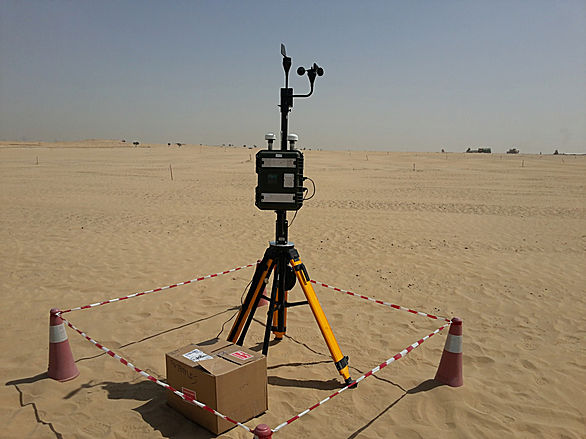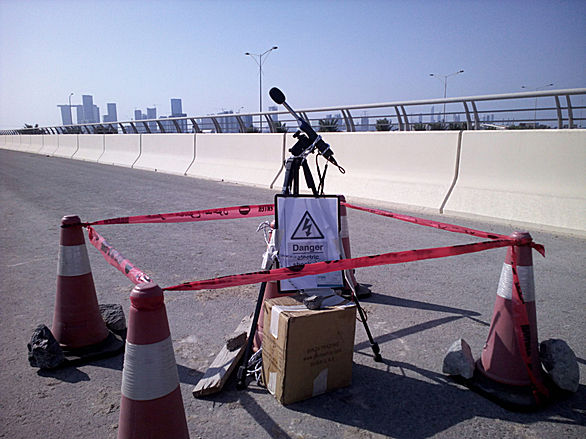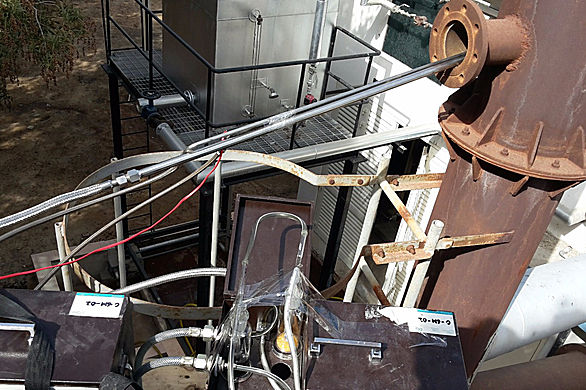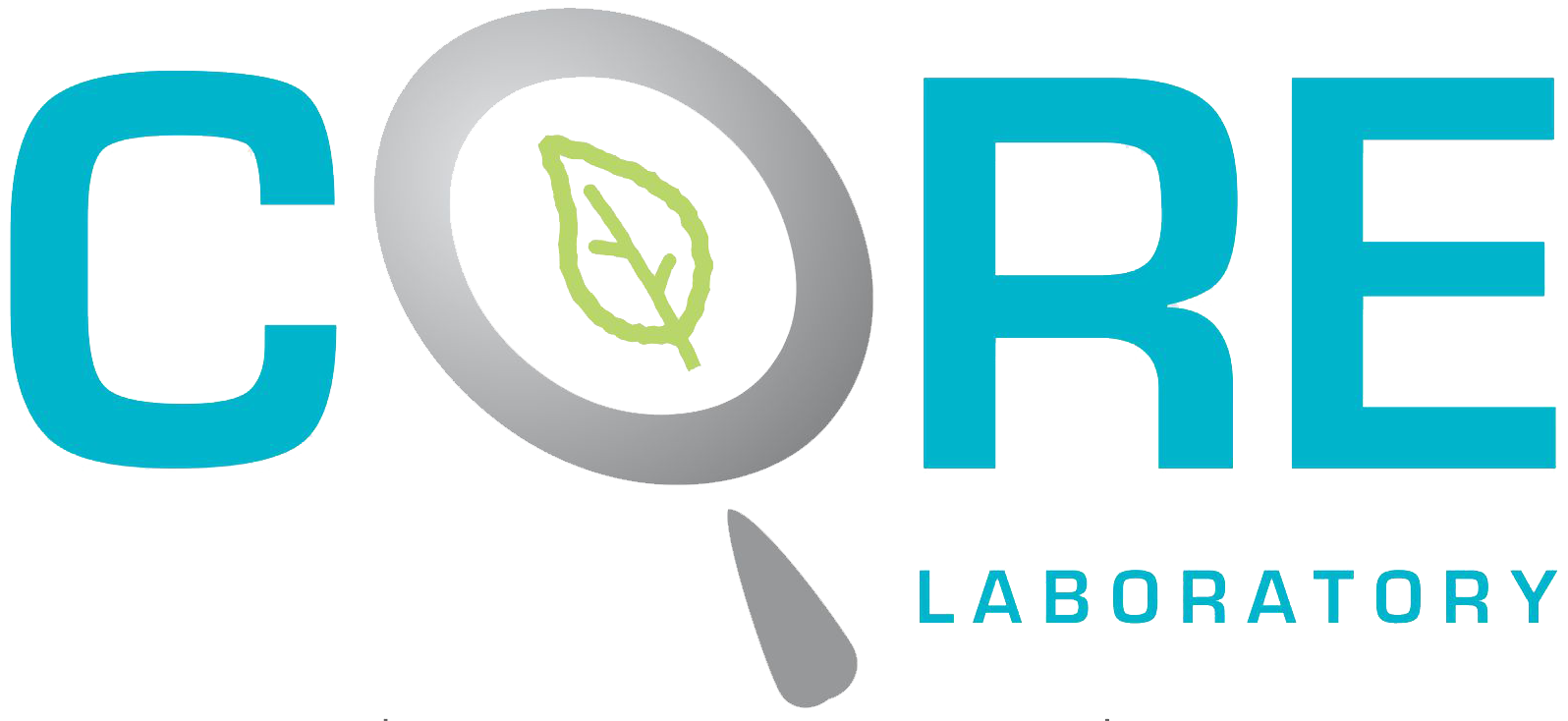Environmental Monitoring
Ambient Air Monitoring
Each year millions of pounds of toxic substances are released into the air we breathe. These substances come from large factories, small businesses, motor vehicles and a number of other sources. The effects of these numerous substances on human and animal populations can range from minor and reversible like eye irritation, to debilitating like asthma, or as serious and deadly as cancer. Humans can be exposed to air pollution in a number of ways but the primary exposure pathways are direct ingestion through breathing and direct ingestion through eating or drinking food products that have been contaminated by air deposition.

Air deposition can be as straightforward as residue on food surfaces that are inadequately cleaned or as complex as chemicals that bio accumulate in the food chain following deposition on water bodies (fish) or forage materials (cattle and other grazing livestock). In the first example, the contaminants are taken up by small fish and bottom dwellers and eventually end up in the larger fish consumed by humans. In the second example, contaminants accumulate in the body fat of grazing animals and end up in edible meat and dairy products like milk, cheese etc.
CORE Laboratory maintains a number of instruments and devices to monitor ambient air that consists of the following constituents:
- Particulate Matter (TSP, PM10, PM2.5 & PM1.0)
- Carbon Monoxide (CO)
- Sulfur Dioxide (SO2)
- Nitrogen Dioxide(NO2)
- Ozone (O3)
- Volatile Organic Compounds (VOCs)
- Methane (CH4)
- Ammonia (NH3)
- Hydrogen Sulphide (H2S)
- Hydrogen Fluoride (HF)
- Lead (Pb)
- BTEX
- Semi-volatile Organics (PAHs, PCBs, POHCs)
- Volatile Organics (Speciated and Total)
Meteorological Data is also collected which may include wind speed, wind direction, ambient temperature, ambient pressure and relative humidity.
Indoor Air Monitoring
Indoor air regulation in the workplace are generally compared with the Occupational Safety and Health Act (OSHA). The agency that oversees this activity is OSHA. Most monitoring in the workplace is based upon personnel monitoring and is most often performed in accordance with OSHA or NIOSH methodology. Acceptable levels are based upon established Safe Tolerance Exposure Levels (STELs). Indoor air contamination can be produced by: industrial processes, cleaning solvents, combustion, new construction materials or, as recently discovered, by the accumulation of soil gas vapor in lower floors of a structure. This is commonly referred to as vapor intrusion.
CORE Laboratory maintains a number of instruments and devices to monitor ambient air that consists of the following constituents:
- Particulate Matter (TSP, PM10, PM2.5 & PM1.0)
- Carbon Monoxide (CO)
- Sulfur Dioxide (SO2)
- Nitrogen Dioxide(NO2)
- Ozone (O3)
- Volatile Organic Components (VOCs)
- Methane (CH4)
- Ammonia (NH3)
- Hydrogen Sulphide (H2S)
- Formaldehyde (HCHO)
- Metals (AI, Cu, Cr, Co, Fe, Pb, Mn, Mo, Zn, and many more)
- Semi-volatile Organics (Speciated and Total)
- Volatile Organics (Speciated and Total)
- Lead (Pb)
- BTEX
- Yeast and Mould (Mircobiological)
- Temperature & Humidity
Noise Monitoring:
Ambient, Industrial and Commercial Noise
Noise generated by industrial and commercial premises can impact on residential and other noise sensitive receptors. Noise generated from existing industrial and commercial premises can be measured and evaluated in order to determine whether a problem exists.

Where new industry or commerce is to be introduced into an area, an environmental impact assessment is generally required as part of the planning process and this will often include a requirement to assess the noise impact. Certain processes will also require a permit under the Environment Clearance Regulations. Through our network of associate consultants, we can provide advice and assessment for practically all environmental issues.
Baseline noise levels are generally established by monitoring, and this could be a combination of attended and unattended noise surveys. Noise modelling can be used to calculate noise levels generated by the new industry and the noise impact can be determined. Industrial noise also affects personnel working in the premises. Employee noise exposure can be assessed for anything from an individual employee up to the entire workforce.
Apart from the normal Noise Monitoring requirements such as LAeq, LAmin, LAmax, LA10, LA90 and many more, CORE Laboratory has CLASS 1 Noise Instruments which can perform Frequency Analysis (Octave Band) which is required for more research and development of the Site activity.
Occupational noise exposure (noise at work)
Noise at work is usually assessed in terms of the noise exposure that is received by employees. Exposure is a combination of the noise level that a person is exposed to and the duration over which the exposure occurs. In order to determine an employee’s exposure, it is therefore necessary to establish their work pattern, how long they spend in different areas or engaged in different activities and the levels of noise that they are exposed to.
In order to reduce noise exposure, it is necessary to reduce the level of noise, the duration of exposure, or both. The most preferable method of reducing exposure is the reduction of noise at source. This has the benefit of protecting everyone who may be in the vicinity of the noise source and can also alleviate the need for personal hearing protection. It is also possible to reduce the duration of exposure by revising job rotations and ensuring that employees spend the minimum time possible in noisy environments. As a last resort, Personal Hearing Protection (PHP) can be used.
Core Laboratory can carry out Noise Level Monitoring covering all calculation which includes LAeq, LAmin, LAmax, LA10, LA90 and many more. These monitoring can be done for different periods ranging from 15 minutes to 24 hours depending on the work shift and comparison to the standard requirements.
Stack Emission Monitoring:
The needs for Stack Emissions Testing are changing, quickly and drastically. Industries from non-metallic mineral processors to synthetic organic chemical manufacturers and from clean fuel boilers to hazardous waste incinerators are experiencing new or revamped environmental regulations. As environmental regulations outpace method development and technology, sampling expertise and regulatory knowledge are paramount to a successful testing program.

Where new industry or commerce is to be introduced into an area, an environmental impact assessment is generally required as part of the planning process and this will often include a requirement to assess the noise impact. Certain processes will also require a permit under the Environment Clearance Regulations. Through our network of associate consultants, we can provide advice and assessment for practically all environmental issues.
- Carbon Monoxide (CO)
- Nitrogen Oxide (NO)
- Nitrogen Dioxide (NO2)
- Oxides of Nitrigen (NOx)
- Sulphur Dioxide (SO2)
- Oxygen (02)
- Carbon Dioxide (C02)
- Stack Temperature
- Stack Velocity & Volume Flow
- Hydrocarbons (CxHx)
- Total Particular Matter (TPM)
- Metal Oxides (Aluminium, Chromium, etc)
- Ammonia (NH3)
Apart from the normal routine Analysis, CORE Laboratory is always ready to provide expertise and knowledge or in some case research to meet the Client requirements.
